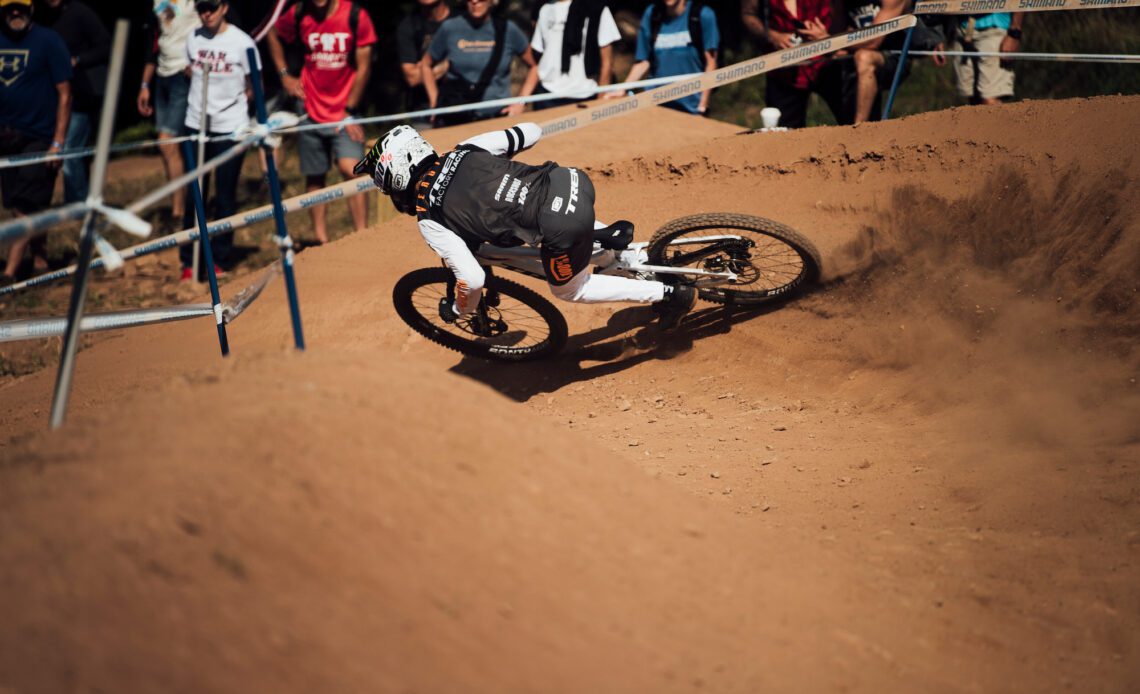UCI announced sweeping changes to the format of World Cup racing on Friday, which means there is a whole new rat’s nest of UCI rules to dig through. The major changes were included in the press release, like the inclusion of enduro as a World Cup event and the addition of a DH semi-final. But there are some sneaky changes lurking in the rule changes, too.
Like the end of the UCI’s ban on Lycra in downhill racing. There are, of course, more practical and meaningful changes than the return – or legalization – of very tight clothing in downhill. Like how protected rider system for downhill will work with semi-finals. Read through for a list of the more important changes coming in 2023. If you want to read through the edited text of every clause of the rules yourself, dive into all 48 pages here.
*For all articles quoted from the UCI rules, words in bold are new text. Words crossed out are old text that is being removed.
Lycra’s back, baby
Let’s start with what everyone really wants to know about: the end of the UCI’s long-running ban on lycra in downhill racing (Article 4.3.011).
The old wording, “All lycra elastine based tight-fitting clothing is not permitted.” is gone. It was vague and, as current race clothing makes clear, did very little to prevent the return of incredibly tight clothing in downhill racing.
In place of the succinct, but some would say unsuccessful rule, is a much longer text. The rule is now broken up into jersey and pants/shorts-specific commandments.
For pants, Article4.3.011 now reads:
“Long pants or short pants combined with suitable knee and shin protection are authorised. Such long or short pants should be of a type that is specifically designed and sold for use in BMX Racing or Mountain Bike downhill events. Long pants of the type described above must be of one–piece construction and made of tear–resistant material. They should cover the entire length of both legs until just above the shoe or ankle. Short pants of the type described above must be of one–piece construction and made of tear–resistant material. They should be worn together with suitable leg protection, that covers the entire knee and the entire shin until just above the ankle.”
What does that mean? Well, maybe not that much. As long as a pant is made of tear-resistant material and “designed and sold for use…
Click Here to Read the Full Original Article at Canadian Cycling Magazine…

